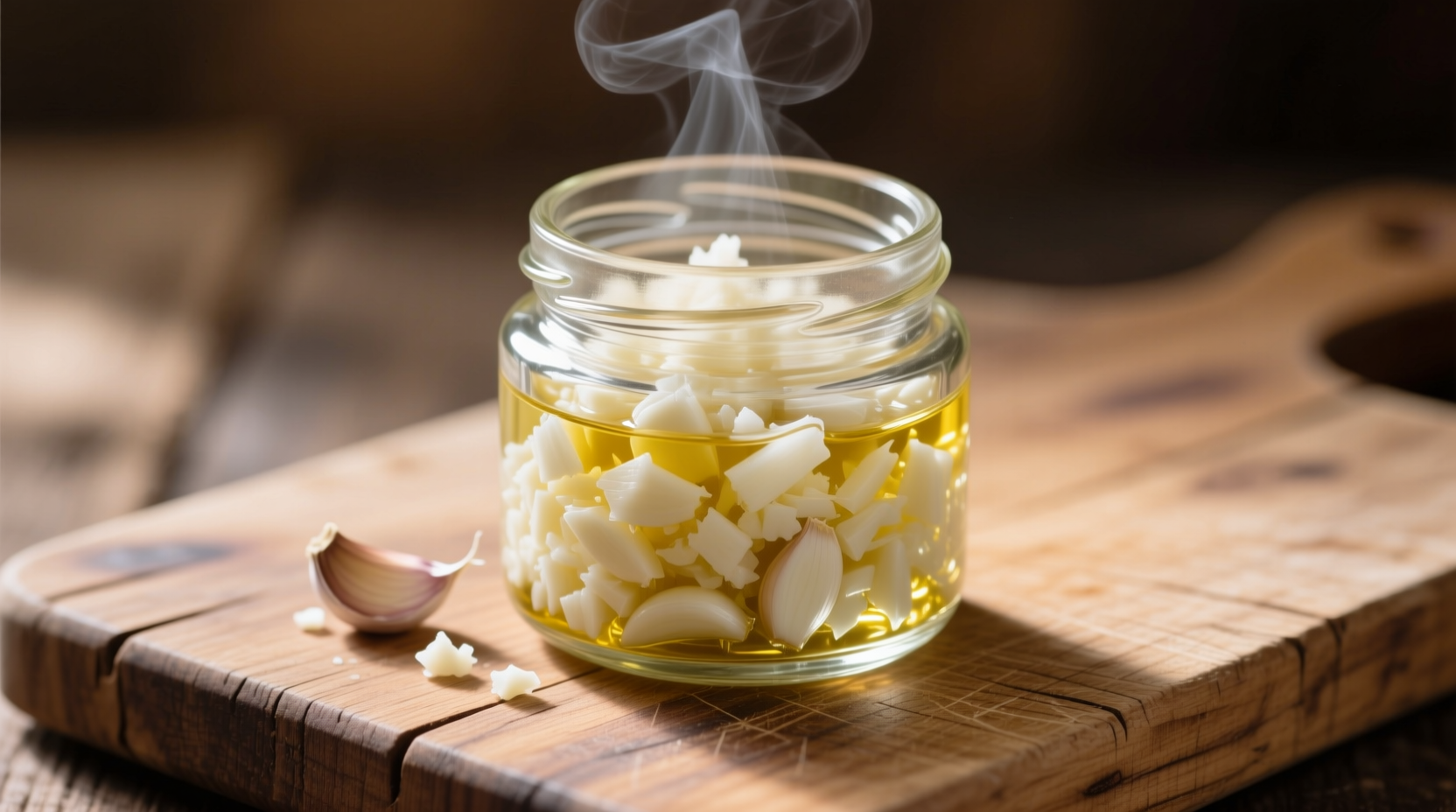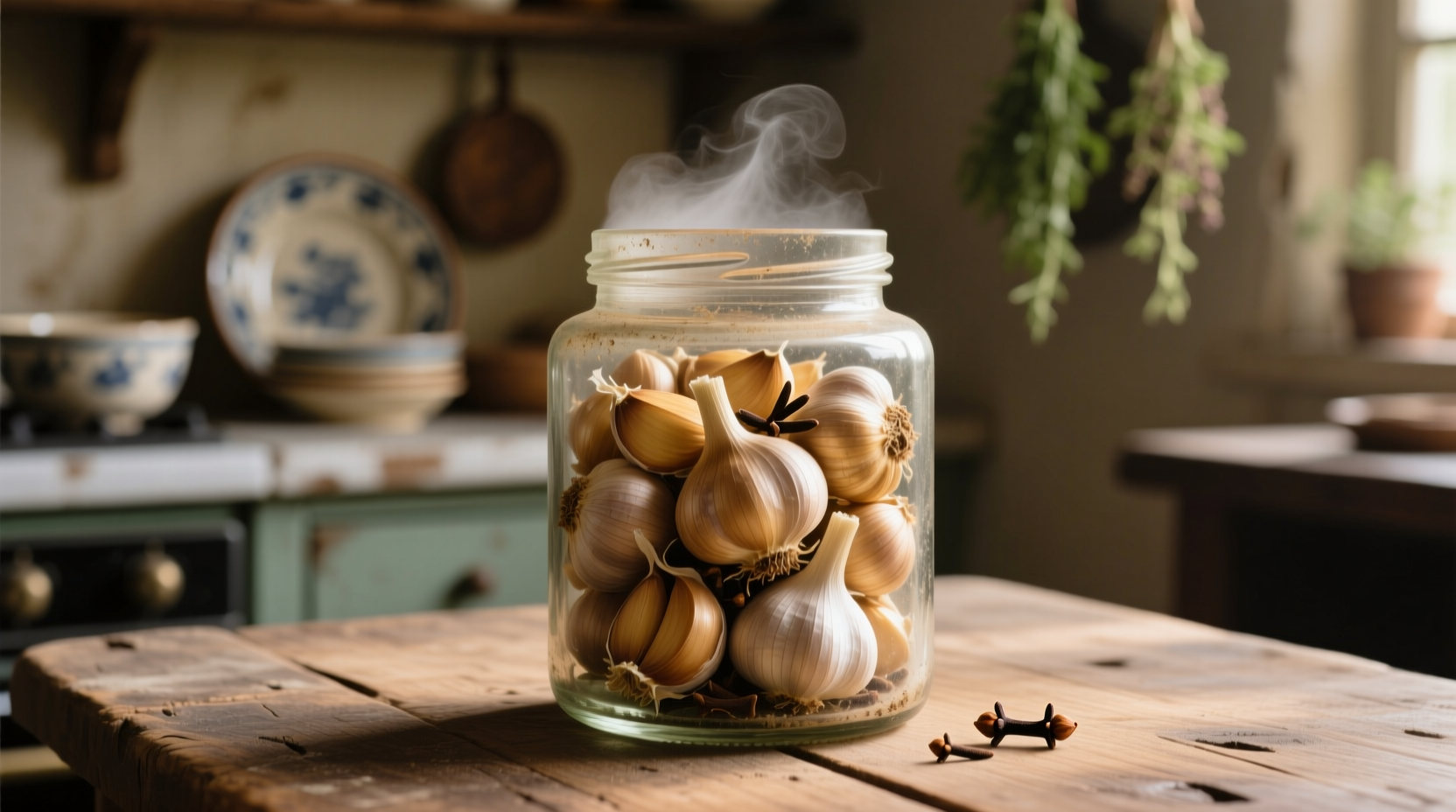Many home cooks keep a jar of garlic in their pantry for convenience, but few understand how to use it properly to achieve restaurant-quality results. While jarred garlic provides time-saving benefits, its flavor profile and chemical composition differ significantly from fresh garlic, requiring specific handling techniques to prevent disappointing dishes.
The Science Behind Jarred Garlic Processing
Commercially prepared jarred garlic undergoes several processing steps that fundamentally alter its chemical composition. According to research published in the Journal of Food Science, the preservation process typically involves:
- Peeling and mincing fresh garlic cloves
- Treatment with citric acid or other preservatives
- Pasteurization at high temperatures
- Storage in oil or water-based solutions
These processes deactivate the enzyme alliinase, which creates garlic's characteristic pungent flavor when fresh cloves are cut or crushed. The result is a milder, sometimes slightly metallic-tasting product that lacks the complexity of fresh garlic.

Jarred vs Fresh Garlic: Practical Comparison
| Characteristic | Jarred Garlic | Fresh Garlic |
|---|---|---|
| Flavor Profile | Milder, sometimes metallic or vinegar notes | Bright, pungent, complex with heat variation |
| Shelf Life | 12-18 months unopened, 1-2 months refrigerated after opening | 3-6 months at room temperature |
| Nutritional Value | Reduced allicin content (30-50% less) | Full allicin potential when properly prepared |
| Best Culinary Uses | Long-cooked dishes, sauces, dressings | Finishing touches, raw applications, quick sautés |
Strategic Applications for Jarred Garlic
Professional chefs use jarred garlic strategically rather than as a direct substitute. The key is understanding where it performs well and where fresh garlic remains essential:
When Jarred Garlic Works Best
- Long-simmered sauces: The milder flavor integrates well into tomato sauces, stews, and braises where fresh garlic might become bitter
- Marinades: Provides consistent flavor without the risk of burning that fresh garlic presents
- Dressings and dips: Creates uniform flavor distribution in mayonnaise-based sauces and vinaigrettes
When to Avoid Jarred Garlic
- Finishing dishes (like garlic bread or pasta finish)
- Raw applications where fresh pungency is desired
- Quick sautés where fresh garlic's aromatic qualities shine
Maximizing Flavor from Jarred Garlic
Food science research from the Culinary Institute of America reveals several techniques to enhance jarred garlic's flavor profile:
- Acid activation: Add a small splash of lemon juice or vinegar to reactivate some flavor compounds
- Oil infusion: Sauté jarred garlic in olive oil for 1-2 minutes to develop deeper flavors
- Flavor layering: Combine with a small amount of fresh garlic (1:4 ratio) for complexity
- Timing matters: Add during the middle of cooking rather than at the beginning to prevent metallic notes
According to FDA food safety guidelines, always refrigerate opened jars of garlic and use within 30 days to prevent potential botulism risks associated with garlic-in-oil products.
Storage Guidelines and Safety Considerations
Proper storage significantly impacts both flavor preservation and food safety. The National Center for Home Food Preservation recommends:
- Store unopened jars in a cool, dark pantry (50-70°F)
- Refrigerate immediately after opening
- Always use clean utensils to prevent contamination
- Discard if you notice bubbling, off-odors, or discoloration
Commercially prepared jarred garlic typically contains preservatives that make it safer than homemade garlic-in-oil preparations, which carry higher botulism risks according to USDA guidelines.
Creative Ways to Use Jarred Garlic Effectively
Professional chefs transform jarred garlic from a convenience product into a valuable kitchen tool with these techniques:
- Flavor base enhancement: Mix with sautéed onions and celery as a quick mirepoix alternative
- Compound butter: Blend with softened butter, parsley, and lemon zest for instant garlic bread
- Quick pasta sauce: Combine with canned tomatoes, red pepper flakes, and olive oil for a 10-minute sauce
- Roasted vegetable boost: Toss with root vegetables before roasting for consistent flavor distribution
When substituting jarred for fresh garlic, use a 1:3 ratio (1 teaspoon jarred = 1 clove fresh) as the flavor is significantly milder. For best results in most applications, supplement jarred garlic with a small amount of fresh for complexity.
Frequently Asked Questions
Can jarred garlic replace fresh garlic in all recipes?
No, jarred garlic works best in long-cooked dishes but lacks the bright, pungent qualities of fresh garlic needed for finishing touches, raw applications, or quick sautés where fresh garlic's aromatic compounds shine.
How long does opened jarred garlic last in the refrigerator?
Most manufacturers recommend using opened jarred garlic within 1-2 months when properly refrigerated. Always check for signs of spoilage like off-odors, bubbling, or discoloration before use.
Why does jarred garlic sometimes taste metallic?
The metallic taste comes from chemical reactions during processing and storage. Adding a small amount of acid like lemon juice or vinegar can help neutralize this off-flavor and reactivate some flavor compounds.
Is jarred garlic less nutritious than fresh garlic?
Yes, jarred garlic contains 30-50% less allicin, the compound responsible for many of garlic's health benefits. The pasteurization process and extended storage degrade these beneficial compounds compared to freshly crushed garlic.
What's the best way to store opened jarred garlic?
Always refrigerate opened jars of garlic immediately. Keep the garlic submerged in its liquid, use clean utensils when removing portions, and ensure the lid is tightly sealed between uses to maximize freshness and safety.











 浙公网安备
33010002000092号
浙公网安备
33010002000092号 浙B2-20120091-4
浙B2-20120091-4